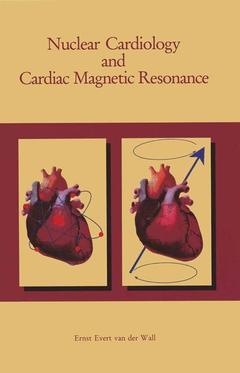Description
Nuclear Cardiology and Cardiac Magnetic Resonance, 1992
Physiology, Techniques and Applications
Author: van der Wall Ernst E.
Language: English
Subjects for Nuclear Cardiology and Cardiac Magnetic Resonance:
Keywords
SPECT; angiography; cardiac function; cardiac imaging; cardiology; cardiovascular; computed tomography (CT); coronary artery disease; magnetic resonance; magnetic resonance imaging; magnetic resonance imaging (MRI); magnetic resonance spectroscopy; positron emission tomography (PET); tomography
Publication date: 11-2013
285 p. · 17x24.4 cm · Paperback
285 p. · 17x24.4 cm · Paperback
Description
/li>Contents
/li>
Cardiovascular nuclear medicine emerged 15 years ago as a new noninvasive technique for the detection of human cardiac disease. It arised from the fields of nuclear medicine and cardiology and the cooperation of both specialties has been very productive. At present, nuclear cardiology techniques belong to the routine armamentarium of the clinical cardiologist. Results obtained by perfusion markers, metabolic tracers, and radionuclide angiography have shown to have important impact on patient management. Although exercise electrocardiography and echocar diography yield the large bulk of necessary data in the cardiac patient, nuclear cardiology provides important data that go far beyond the results obtained by the standard procedures. Magnetic resonance imaging is a relative newcomer in cardio logy and has still to prove its value in clinical cardiology . Yet, initial results have been encouraging both in congenital heart disease and in coronary artery disease. This book is based on 16 review publications that have been written throughout the period of 1985 till present time. Most chapters have been published in the period 1989 until 1991; the preceding review papers have been updated as much as possible. Furthermore, Chapter 15 entitled" What's new in cardiac imaging" has been espe cially written for this book. The Chapters 9, 11 and 13 have been recently written and have not been published yet.
Physiology.- 1 Perfusion: evaluation of myocardial blood flow by radionuclide imaging.- 2 Metabolism: assessment of myocardial metabolism with radiolabeled free fatty acids.- 3 Function: assessment of cardiac function by radionuclide angiography.- Techniques.- 4 Planar thallium-201 imaging: useful in clinical cardiology?.- 5 Cardiac single photon emission computed tomography: SPECT, a new aspect in cardiac imaging?.- 6 Positron emission tomography in cardiology: from research device to clinical tool?.- 7 Magnetic resonance imaging: a new approach for evaluating coronary artery disease?.- Applications.- 8 Acute myocardial infarction: evalution by nuclear imaging techniques.- 9 Infarct sizing by scintigraphic techniques and magnetic resonance imaging.- 10 Metabolic imaging in cardiology with radioisotope techniques and magnetic resonance spectroscopy.- 11 Alternative stress methods in the evaluation of coronary artery disease.- 12 Cardiomyopathies: evaluation with radionuclide techniques.- 13 Clinical significance of silent ischemia: role of radionuclide techniques.- 14 The effects of calcium-antagonists on radionuclide function in patients with silent ischemia after myocardial infarction.- 15 What’s new in cardiac imaging?.- 16 Guidelines for clinical use in nuclear cardiology.
© 2024 LAVOISIER S.A.S.




